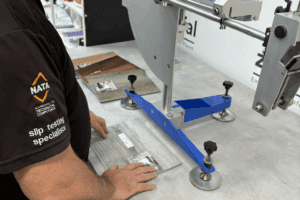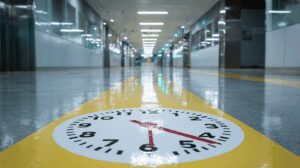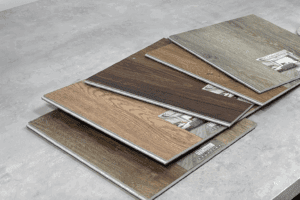Local Gov: Public Paths, Parks & Liability
Safer Surfaces, Lower Liability
Slips, trips and falls are one of the leading causes of injury claims in Australia. For councils, these incidents may be covered by public liability insurance, but every claim feeds into higher premiums and ongoing budget pressure. Routine slip resistance testing under AS 4663:2013 helps councils prove compliance, reduce risk, and direct maintenance spending where it matters most.
Local governments are responsible for keeping thousands of public spaces safe: footpaths, ramps, parks, playgrounds, aquatic centres, amenities blocks, and civic buildings. Every one of these surfaces is a potential liability if it does not meet slip resistance requirements.
The Liability Challenge
- Slips, trips and falls dominate claims: They account for more than 22% of serious injury claims in Australia, cutting across workplaces and public spaces alike.
- Councils don’t pay claims directly: Payouts are covered by public liability policies managed through sector insurance pools.
- Premiums rise with claims: Even a handful of serious slip-related claims can add hundreds of thousands of dollars in loadings spread across future council budgets. In many cases, the cost of annual slip testing is lower than the increase from a single claim.
What the Standards Require
Council assets must comply with the same frameworks as private developments:
- AS 4663:2013 – in-situ slip resistance measurement of existing surfaces
- HB198:2014 – location-based classifications for ramps, stairs, pavements, and amenities
- National Construction Code – mandating slip resistance in new and refurbished assets
Examples:
- External ramps steeper than 1:14 must achieve P5 wet.
- Public toilets require P3.
- Pool surrounds and change rooms require P4–P5.
Why Testing Matters for Councils
Routine slip resistance testing delivers:
- Defensibility: NATA-traceable reports provide insurers and tribunals with objective evidence.
- Budget protection: Prevents insurance premium increases by reducing the frequency and severity of claims.
- Maintenance prioritisation: Directs limited resurfacing budgets to the areas at greatest risk.
- Community safety: Reduces preventable injuries and demonstrates diligence to ratepayers.
Zerofal’s Role
Zerofal conducts in-situ testing to AS 4663:2013 using calibrated pendulum and dry floor friction devices. Results are clear, certifiable, and simple to integrate into council asset management systems.
Protect your community and your budget.
Schedule accredited slip resistance testing for council assets today.
Explore more

How Much Does Slip Resistance Lab Testing Cost?
Slip resistance testing costs depend on surface type, number of samples, and method (wet pendulum or dry friction). This guide explains typical AS 4586 lab pricing, what’s included in a

Cure Time Matters—Avoid Testing Too Soon
Curing is one of the most overlooked factors in slip resistance testing. This article explains how premature testing can understate performance, invalidate AS 4586 results, and cost clients compliance. Learn

Is Your Sample Ready? Prep Checklist
Accurate slip resistance results start before the test begins. This guide outlines how to prepare your samples for AS 4586 testing – covering size, cleaning, curing, and packaging – to
